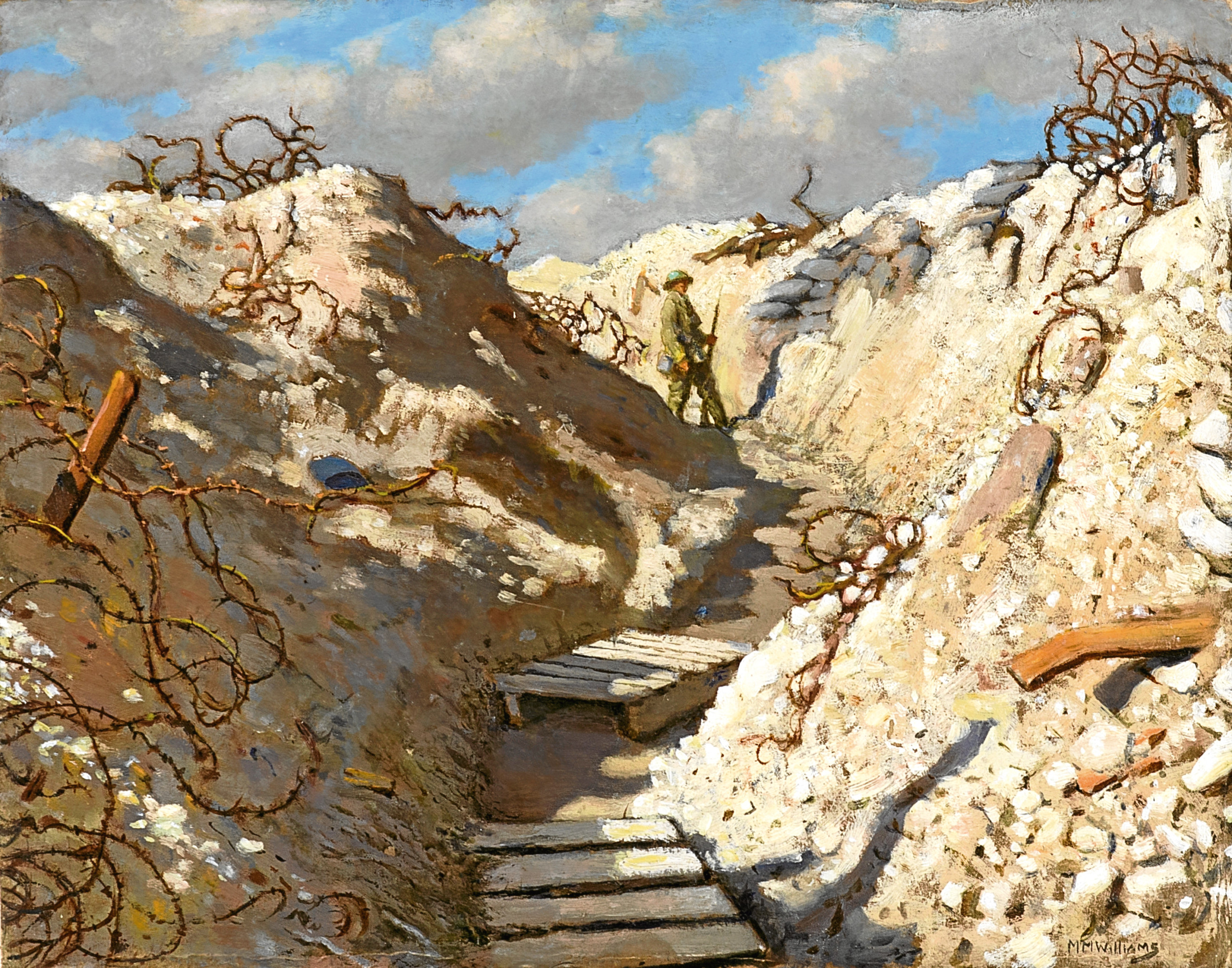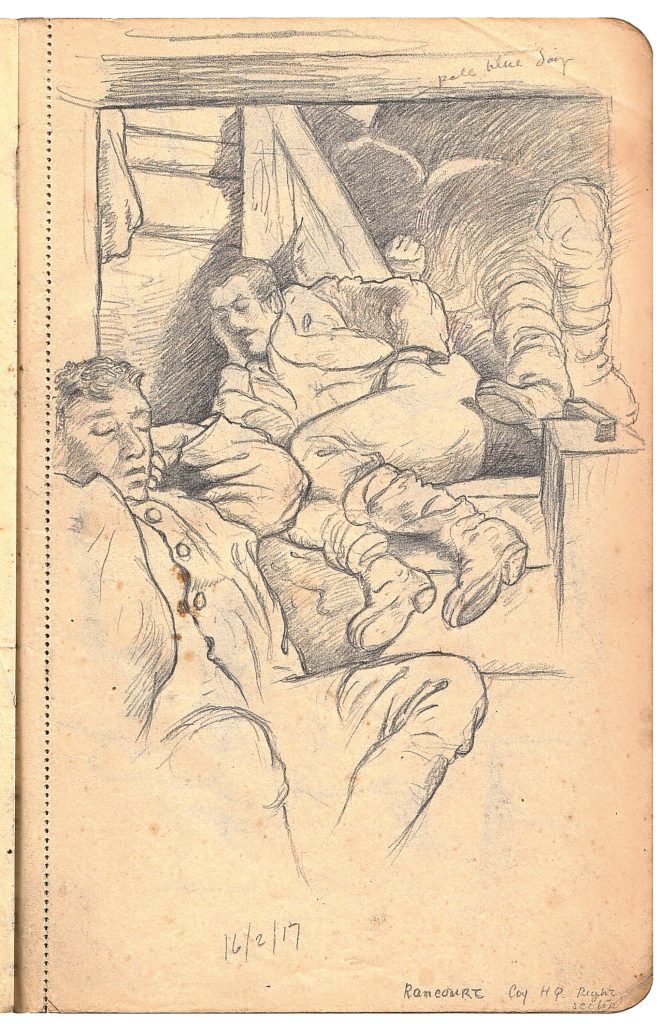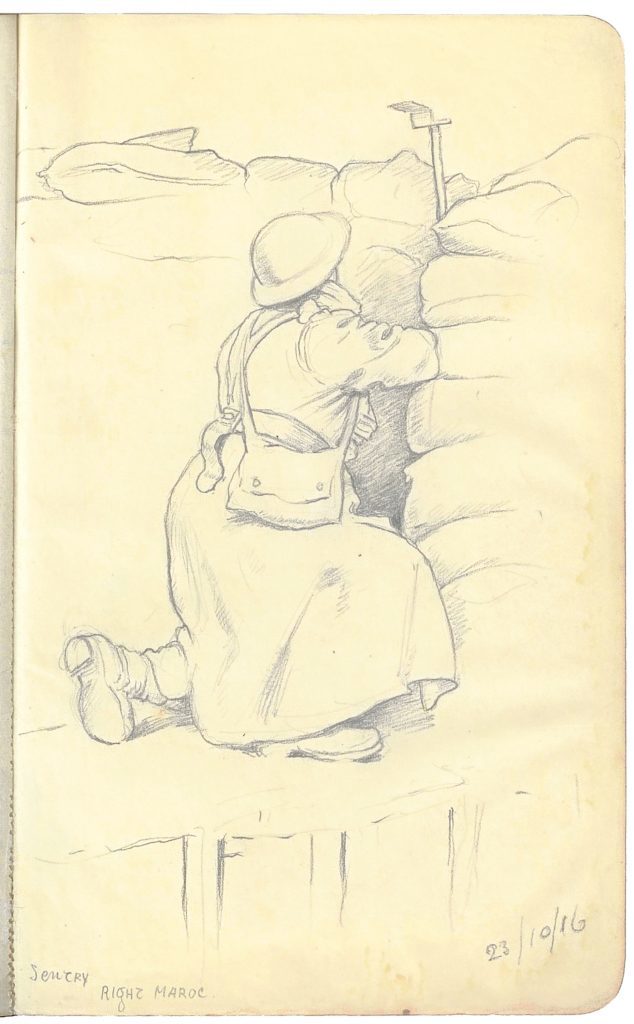
THEY filled 15 sketchbooks that were tucked away in a set of drawers but never forgotten.
Now 173 of the pencil drawings by an Edinburgh-based artist are providing a revealingly-fresh look at the First World War.
Morris Meredith Williams left behind the tranquillity of teaching drawing at Fettes College for the bloody carnage of the front line in France. But wherever he went he had pencil and paper in hand, capturing everything from the routinely mundane to the brutally bloody.
Sometimes the sketches were calmly composed at leisure as troops rested behind the lines, on other occasions snatched in moments amid the deadly firing and shelling.
Along with a selection of the 800 or so letters that went back and forth with beloved wife Alice, they have now been published in new book An Artist’s War.
It’s written by Phyllida Shaw, 59, Morris’s great niece who has just been in Edinburgh to talk about the man she remembers from her teenage years.
“Like so many of those who served, he never spoke about what he saw out there,” said Phyllida, who was left the sketchbooks and letters by Morris’s second wife Grace whom he married after Alice’s death. “But even in his late eighties and early nineties he was completely focused on painting and would go off doing that all day.
“He had one room of the house as a studio and I remember going in there and smelling the paint and seeing him working.”
Morris, who died in 1973, enlisted at the second attempt in April 1915, having initially been rejected for being too small as he was under 5ft 3in.
He was shipped out to France in 1916 and set about putting everything he saw down on paper for the next three years.
“He drew men carrying rations, digging ditches, laying cable and lorries making their way along potholed roads filled with water.
“One of my favourites is men resting in the pouring rain under some Mackintosh sheets, with Morris presumably sitting under some shelter sketching. As an artist he had this compulsion to record.”
And the junior officer documented the aftermath of the battles taking place all around.
“In early 1917 they spent a lot of time near the north bank of the Somme and there are drawings of the remains of German and French soldiers,” said Phyllida.
“The bodies disintegrated but the uniforms didn’t. They had been left unburied by the side of the road.
“And there are pictures of men clambering over barbed wire which they hadn’t time to remove.” As well as drawing non-stop, Morris exchanged letters with Alice on an almost daily basis.
His frustrations with everyday Army life came through, but what he was careful never to do was let Alice get any indication of the peril he constantly faced.
Instead, he spoke of the surprising peace and the birdlife when shells weren’t falling.
“He really plays down the danger he was in,” said Phyllida. “On one occasion he talks about going up to see a Fettes pupil who was manning a forward observation post.
“What he didn’t say was that the post had been shelled and he was in there pulling bodies out of the way.”
After the war Morris returned to Edinburgh with Alice, also an acclaimed artist, living in the city until 1929.
“There’s just something about these drawings that are more real than a photograph,” adds Phyllida.
“I remember touching them for the first time and seeing the pencil marks come off on my finger. I had this extraordinary feeling of that pencil mark having travelled almost 100 years through time, bringing what Morris saw then to me. It was incredibly moving.”
An Artist’s War: The Art and Letters of Morris and Alice Meredith Williams by Phyllida Shaw, foreword by Hew Strachan (History Press £30).

Enjoy the convenience of having The Sunday Post delivered as a digital ePaper straight to your smartphone, tablet or computer.
Subscribe for only £5.49 a month and enjoy all the benefits of the printed paper as a digital replica.
Subscribe
